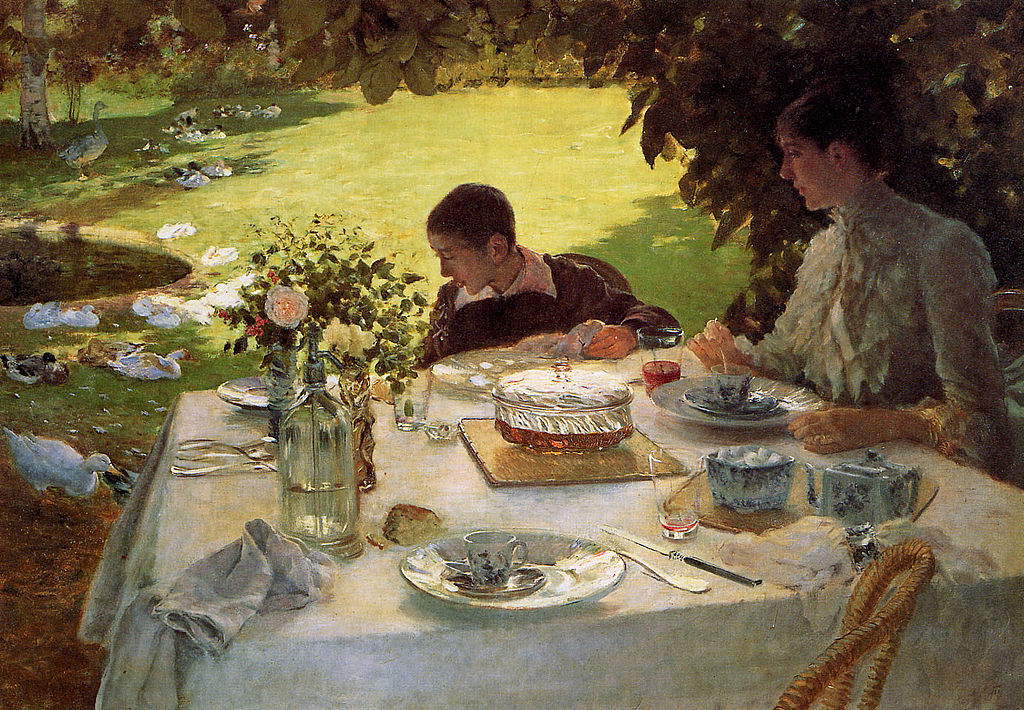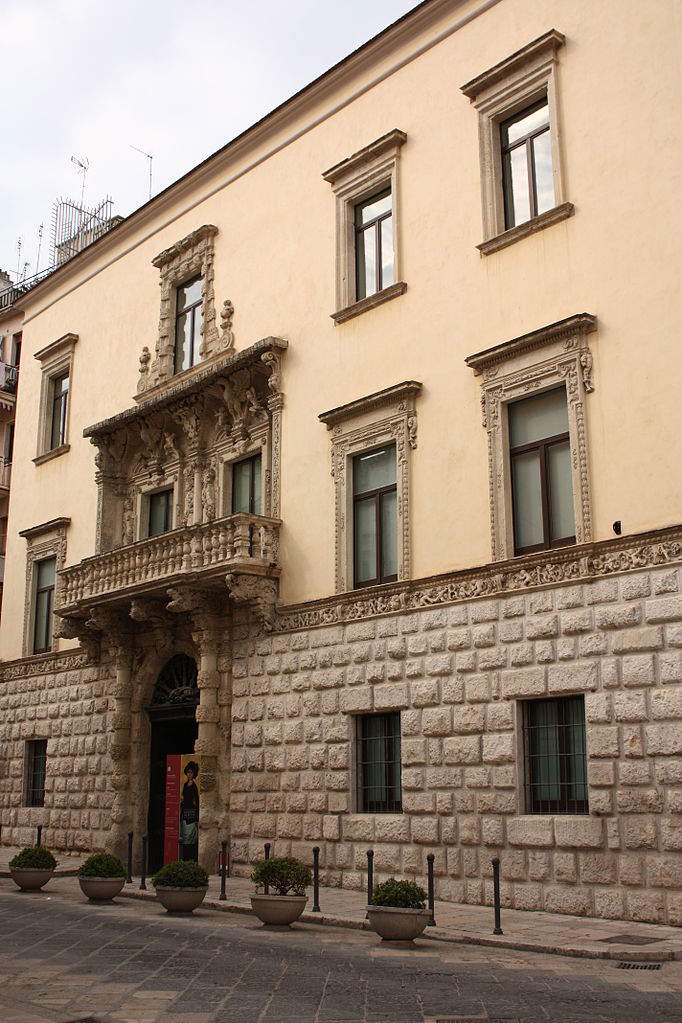The word "impressionism" in art history is directly connected to the depiction of Paris in the second half of the 19th century. The Ville Lumiè;re, with its boulevards, cafes and bistros, was the subject of hundreds of artists who wanted to capture the beauty of its light, colors and inhabitants.
Therefore, when we say “impressionism,” we hardly (and erroneously) think of Italy and its painters in the late 19th century. Giuseppe De Nittis (Barletta, 1846 - Saint-Germain-en-Laye, 1884) and Giovanni Boldini (Ferrara, 1842 - Paris, 1931), just to name the best known, are among the artists who represented, from the very beginning of their careers, Italy “Impressionist,” and then moved to Paris, in those years the emblematic city of that new artistic current and the cultural capital of what is now Europe.
On the occasion of the exhibition in the Palazzo dei Diamanti in Ferrara, Finestre sull’Arte has already extensively covered the life and artistic career of Giovanni Boldini, while we have not yet had the opportunity to take a closer look at what was a very great painter of 19th-century southern Italy, as well as an important liaison figure between Italy and the Ville Lumière, namely Giuseppe De Nittis.
After a brief period of art studies at theAcademy of Fine Arts in Naples, where he had enrolled in 1861 (the same year in which Bazille, Sisley, Renoir, Monet, Pissarro and Cezanne began to associate with each other in Paris and give rise to the artistic movement of Impressionism), De Nittis immediately devoted himself to en plein air compositions , having as his subject matter above all Barletta, his hometown.
 |
| Giuseppe De Nittis, Self-Portrait (1883-1884; pastel on canvas, 114 x 88 cm; Barletta, Pinacoteca Giuseppe De Nittis) |
A life too short for the talented De Nittis, who was born in 1846 and died in Saint-Germain-en-Laye, France, when he was only thirty-eight years old. Despite the fact, therefore, that his career was not particularly long-lived like that of other artists, he certainly made his mark on the development of Italian art in the second half of the 19th century and, like the Impressionist artists, saw his fame recognized even in cities such as Paris and London.
Shortly after leaving the Academy of Fine Arts in Naples, he founded, along with other painters including Adriano Cecioni (Fontebuona, 1836 - Florence, 1886), the School of Resìna, or Portici, named after the town in Campania, not far from modern Herculaneum, which he loved to portray in his paintings. Strong in the influence of the Posillipo School, devoted to landscape painting, the program of the Resìna School is, exactly like the temperament of the Barletta painter, distinctly anti-academic and oriented toward representation from life and the impression of the moment and, therefore, very much akin to that carried out at the same time in Florence by the Macchiaioli, who also specialized in painting in the open air and in the use of an artistic technique similar to that of the Impressionists, and in which the rapid use of patches of light and shadow defined the pictorial subject.
Subsequently, like many painters of the time, De Nittis devoted himself to the discovery of Italy and Italian art, weaving relationships, in Florence, with the Macchiaioli group in particular. From 1868, the year he moved to Paris, he soon became part of the artistic circles of the metropolis, beginning to come into contact with the Impressionists and the art dealer Adolphe Goupil (Paris, 1806 - 1893). In 1874 De Nittis participated in the first Impressionist exhibition, despite the fact that by this date he had already left Paris to go first for a period in London (in search of new markets and commissions) and then returned to his native Barletta. The artist was particularly attached to his city and southern Italy in general: many of his pictorial subjects, both before and after his Parisian sojourn, feature Apulian landscapes, the city of Portici and Vesuvius. The latter was a favorite subject of his works, and he immortalized it while also recounting the impressions aroused by his walks along its slopes, which were also collected in a series of written accounts. Along with the works depicting Vesuvius, natural and desolate views of his native Apulia recur in his works: The Road from Brindisi to Barletta, presented at the Paris Salon of 1872, is one of the most poignant examples, and the protagonist is an abandoned and deserted Apulian landscape under the blazing sun, traversed by two travelers and a buggy. The same burning sun of Apulia can be found in a painting such as La Masseria, named after the name still given to Apulian farms where the tools of peasant and pastoral use are kept, along with food stores for people and animals. The rural landscape of Apulia returns in an important view made around 1870, titled Along the Ofanto, while in Breakfast in the Garden mother and son are seated at a table under a leafy tree in their garden: the work harkens back to other moments of repose painted by De Nittis, for example the one captured in Conversation in the Garden from a private collection, where palm trees, also typical of the maritime landscape of Apulia, offer refreshment from the hot sun to two ladies conversing on a bench on a deserted street.
 |
| Giuseppe De Nittis, The Road from Brindisi to Barletta (1872; oil on canvas, 27.6 x 52 cm; Private collection) |
 |
| Giuseppe De Nittis, The Masseria (s.d.; oil on panel, 12 x 25 cm; Private collection) |
 |
| Giuseppe De Nittis, Breakfast in the Garden (18831884; oil on canvas, 81 x 117 cm; Barletta, Pinacoteca Giuseppe De Nittis) |
 |
| Giuseppe De Nittis, Conversation in the Garden (s.d.; oil on canvas, 51 x 31.5 cm; Private collection) |
 |
| Giuseppe De Nittis, Along the Ofanto River (1870; oil on canvas, 43 x 65 cm; Barletta, Pinacoteca Giuseppe De Nittis) |
Not only rural landscapes: starting in 1873, De Nittis also began to paint ports, marinas and fishing boats, testifying to the strong impact that Barletta, a city located directly on the Adriatic coast, had on his training and artistic career.
Many of the works created by the artist during his stays in Barletta and southern Italy are preserved at the “Giuseppe De Nittis” Art Gallery, the richest existing collection dedicated to the painter, consisting of 146 paintings, 65 drawings, books and an epistolary. Since 2007, the collection has been located in the majestic venue of Palazzo Marra in Barletta: the 16th-century building, transformed in successive eras, finished restoration in 2005 and managed by the Municipality of Barletta, formerly the residence of the Orsini family and then of the Marra family and then again of the Fraggiani family, is therefore now a key place to immerse oneself in De Nittis’ poetics. The paintings were donated by De Nittis’ wife, muse and model, LéontineGruvelle, to the city of Barletta in 1914.
Looking at his works and reading his accounts, a portrait emerges of an artist who, although born in the province, had a temperament and a soul that today we could almost call “European.” in fact, to be the protagonist of his paintings are not only the landscapes of his land, but also the modernity and the continuous variability of the metropolis and its protagonists, especially the women whom he loved so much to portray in the sumptuousness of their dresses and, not least, the japonaiserie. In late nineteenth-century Paris, the latter were all the rage and, surely, De Nittis had the opportunity to observe them precisely in the Ville Lumière as a consequence of the Japanese government’s desire to make its art known through participation in the Universal Exhibitions. De Nittis came into contact with Japanese art (to the point, then, of becoming a true collector of it) precisely thanks to the Impressionist group, Manet and Degas, who made frequent use of it in their works.
 |
| Barletta, Palazzo Marra, home of the Giuseppe De Nittis Picture Gallery. |
Giuseppe De Nittis was also a great experimenter with regard to artistic techniques, skillfully maneuvering oil painting, watercolor, pastel and graphic art. There have been several retrospectives and anthological exhibitions dedicated to him since his death in 1884, just to consolidate his importance as an international artist: the Venice Biennale itself decided to dedicate as many as three in 1901, 1914 and 1928.
De Nittis is an artist who would certainly deserve to be further investigated and especially read in the many testimonies he left us, especially for the example of a man who was strongly tied to southern Italy, Apulia and his hometown birthplace, but who had a continuous desire to push himself to knowledge and comparison with other Italian and non-Italian mentalities, feeling himself more than an Italian painter in the strict sense a “European” citizen and artist, for whom travel was a fundamental element of his existence and his continuous source of inspiration.

The author of this article: Francesca Della Ventura
Ha studiato storia dell'arte (triennale, magistrale e scuola di specializzazione) in Italia e ha lavorato per alcuni anni come curatrice freelancer e collaboratrice presso il Dipartimento dei Beni Storici, Artistici ed Etnoantropologici del Molise (2012-2014). Dal 2014 risiede in Germania dove ha collaborato con diverse gallerie d'arte e istituzioni culturali tra Colonia e Düsselorf. Dallo stesso anno svolge un dottorato di ricerca in storia dell'arte contemporanea all'Università di Colonia con una tesi sul ritorno all'arte figurativa negli anni Ottanta in Germania e Italia. Nel 2018 è stata ricercatrice presso l'Universidad Autonoma di Madrid. Ha scritto sull'identità tedesca e italiana nell'arte contemporanea e nella politica, sul cinema tedesco e italiano del dopoguerra e grazie a diverse borse di studio D.A.A.D. ha presentato la sua ricerca a livello internazionale. Attualmente i suoi temi di ricerca riguardano l’arte degli anni Ottanta, in particolar modo quella femminista. Dal 2020 è entrata a far parte del gruppo di ricerca dell’Universitá di Bonn “Contemporary Asymmetrical Dependencies” con un progetto di ricerca sulla costruzione dei nuovi musei e delle condizioni di dipendenza asimmetrica dei lavoratori migranti nell’isola di Saadyat ad Abu Dhabi. Nell'ottobre 2020 ha fondato inWomen.Gallery, galleria online, sostenibile e per artiste. Dal 2017 lavora come giornalista d'arte per la rivista online e cartacea Finestre sull'Arte.Warning: the translation into English of the original Italian article was created using automatic tools. We undertake to review all articles, but we do not guarantee the total absence of inaccuracies in the translation due to the program. You can find the original by clicking on the ITA button. If you find any mistake,please contact us.